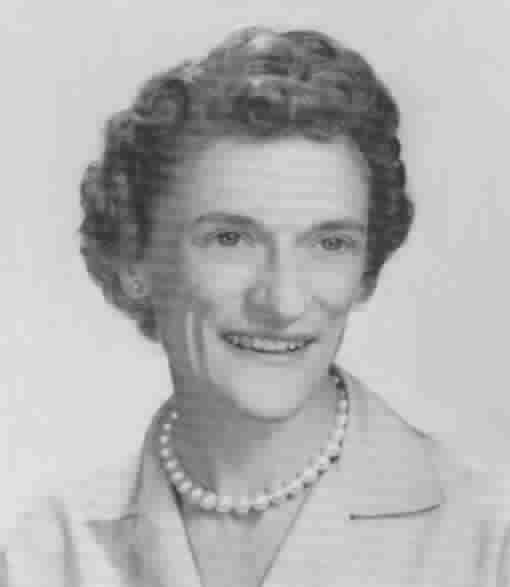 |
The Margaret Scherf Mystery Stories |
|
|
||
Walter Cameron handed Harriet the yellow envelope. "Sign for it, Hat." He thrust a pencil and a sheet of paper at her. |
||
| The focus of this section is the three juvenile mystery stories written by Margaret Scherf. While not actually a series, the first two books share the same protagonist, and all three books share similar themes. The three books were published by Franklin Watts, Inc., and the intended market was libraries. As such, nearly all copies that surface are library discards in fair or poor condition. | ||
|
Margaret Scherf is best known for her many humorous murder mysteries. Scherf's writing career spans from 1940 to 1978, and the titles of her novels, such as The Corpse Grows a Beard and Gilbert's Last Toothache, readily suggest that humor is an important element. A few of Margaret Scherf's books are still in print to this day, evidence of her popularity as an author. Margaret Scherf's writing career came to an abrupt end in 1979 when she was killed by a drunken driver.
Margaret Scherf is important to series book enthusiasts for writing the manuscript for the original text of The Secret of the Wooden Lady in the Nancy Drew series. Scherf's contribution to the Nancy Drew series must have been the inspiration for her three juvenile mystery stories. These books contain numerous references to series books and to the authors of series books. While some of the references are easy to spot, others are not as obvious. The most noticeable one is the name of the protagonist in the first two volumes, who is none other than Harriet Adams. The names of other characters slyly refer to various people with connections to series books, names such as Benson Shively, Walter Cameron, Edna Partridge, Horace Granville, and even an artist named Russell. It's enough to give any series book enthusiast a pause and a chuckle. |
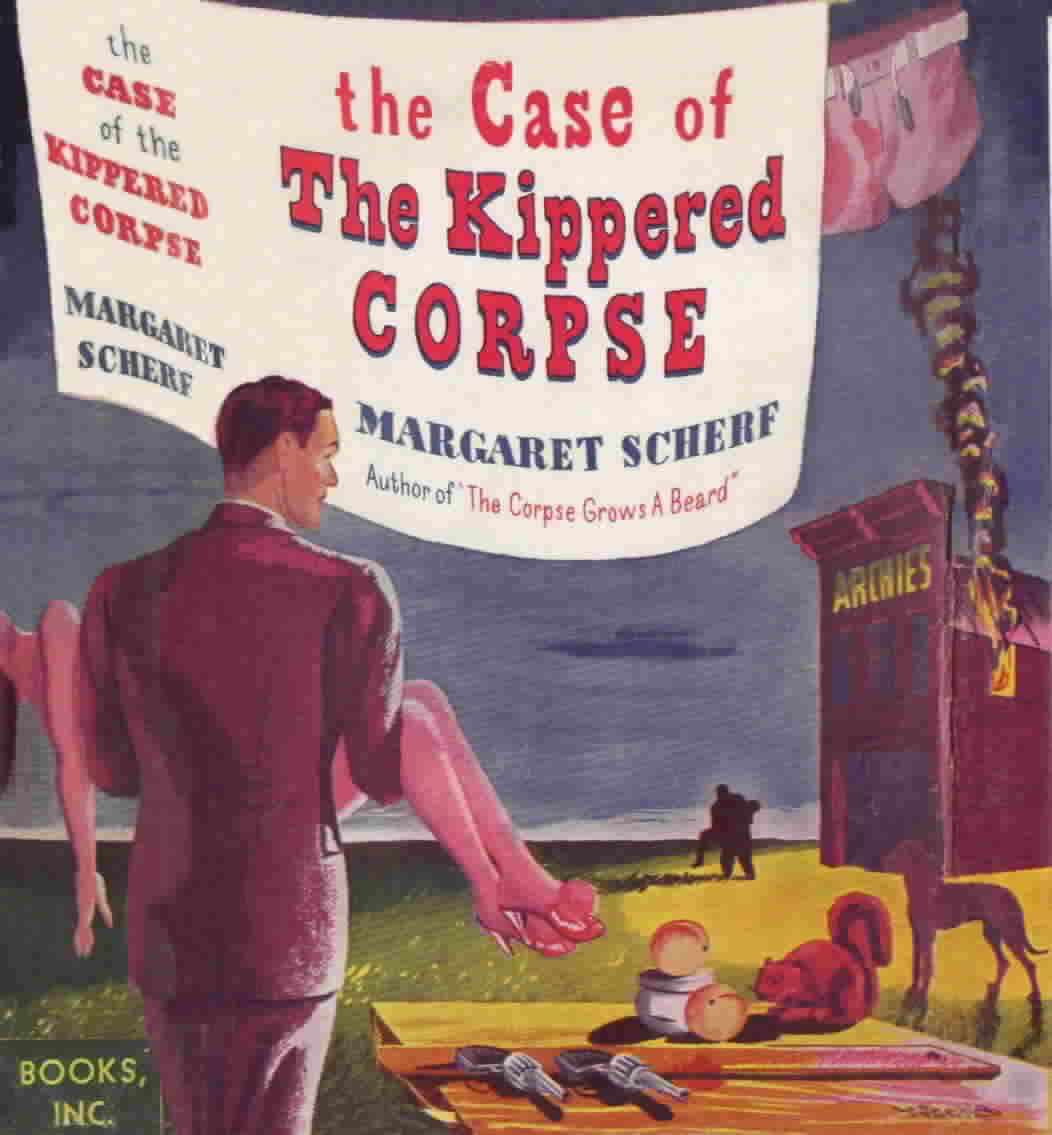 Above, The Case of the Kippered Corpse, 1946 Book Club Edition Below, Nancy Drew #27, The Secret of the Wooden Lady 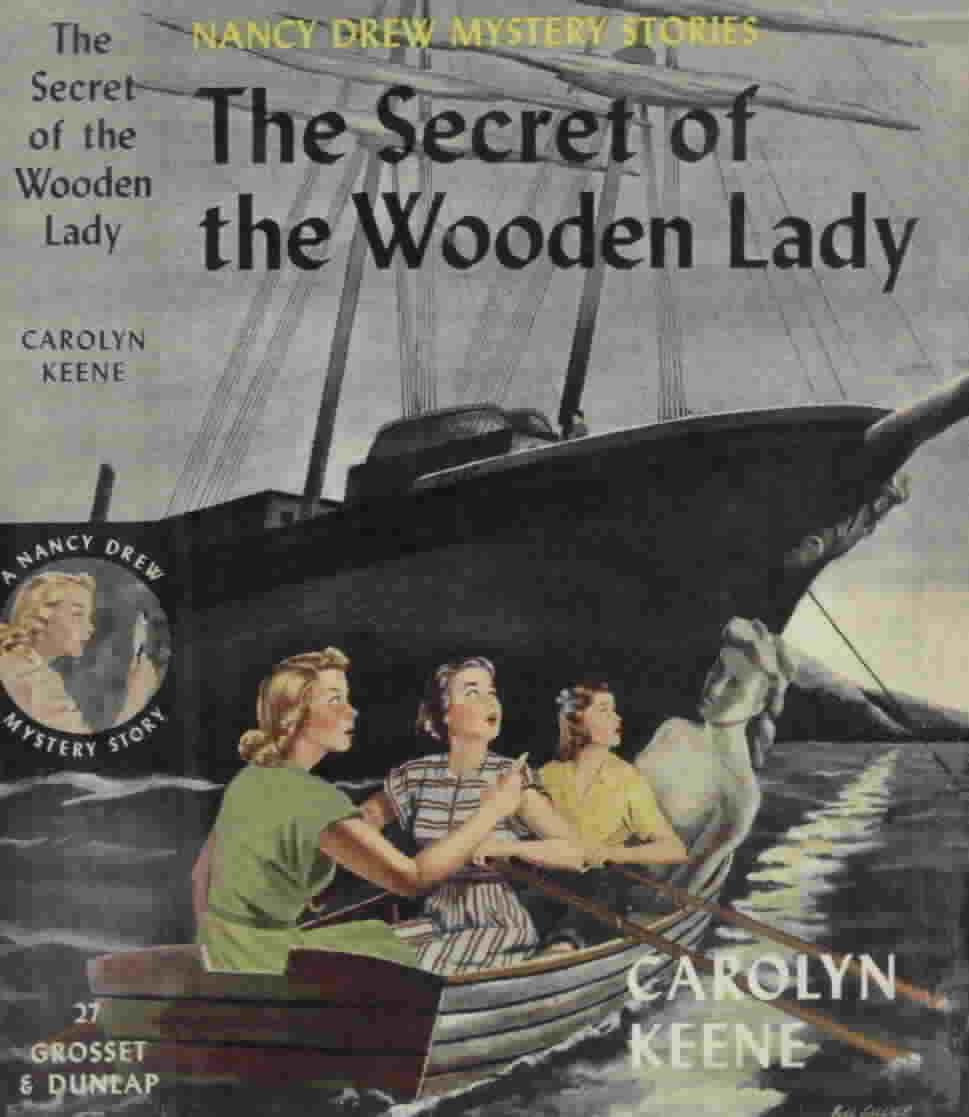 |
|
| The books also contain plot devices that are either similar to or identical to plot devices present in various series books. The titles of each of the three books refer to titles and objects in the Nancy Drew series. Other interesting objects and locations are a tower room, something buried in a cellar, a trunk with a false bottom that is covered with wallpaper, a desk that may contain a hidden panel, a note hidden in the hand of a statue, a cellar full of statues, a rusty key, and a suspicious man with a black beard. Several of these plot devices appear to refer to The Secret of the Wooden Lady. | ||
|
|
||
| The Mystery of the Velvet Box 1963 | ||
Gerald takes an immediately interest in Harriet's velvet box, which is her inheritance from her grandmother. Harriet's mother receives a desk. The Adamses had expected to receive a valuable painting from Gran, but the painting is not mentioned in the will—and has disappeared! An antiques dealer, Mr. Benson Shively, appears at the Adams residence and requests to buy the desk. He offers an outrageous amount and is greatly disappointed when refused. |
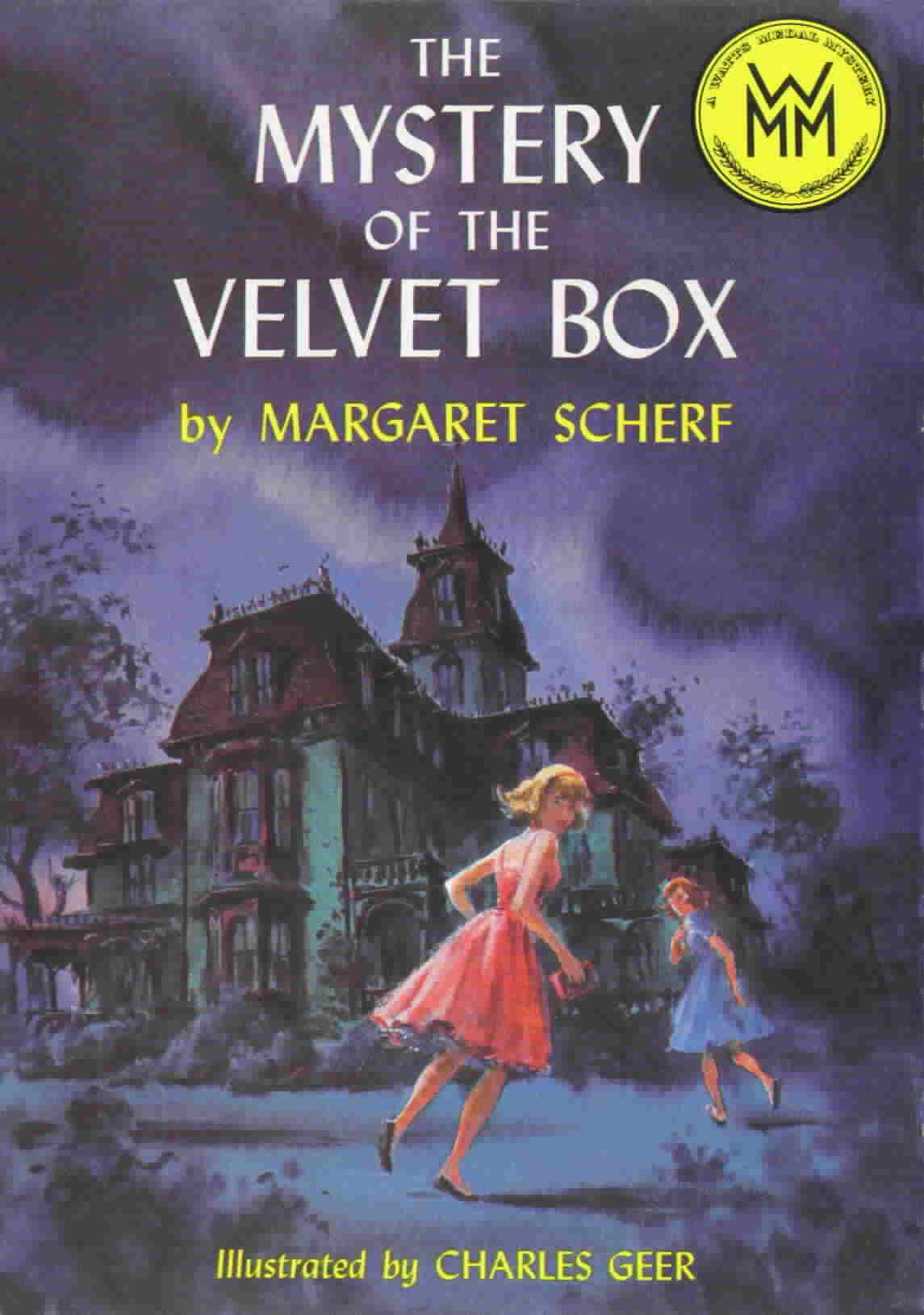 |
|
| That night, a prowler partly pulls apart the desk, apparently looking for something. Harriet soon realizes that her velvet box holds a clue that will help locate the valuable painting. The trouble is that someone else knows about the clue! Harriet and her friends must now work quickly to find the clues that lead to the painting before someone else solves the puzzle first. | ||
|
|
||
| The Mystery of the Shaky Staircase 1965 | ||
That night, Harriet and Cathy spot a masked man leaving Miss Emma's garage! Could the intruder be hoping to find a valuable painting? The next day, the girls help Miss Emma go through her uncle's things. A Russell painting is discovered! Mr. Lowery the art dealer just happens to show up right after the discovery and makes an offer to buy the painting. Harriet suspects that Mr. Lowery might be up to something, but how could he have known that a painting would be found? |
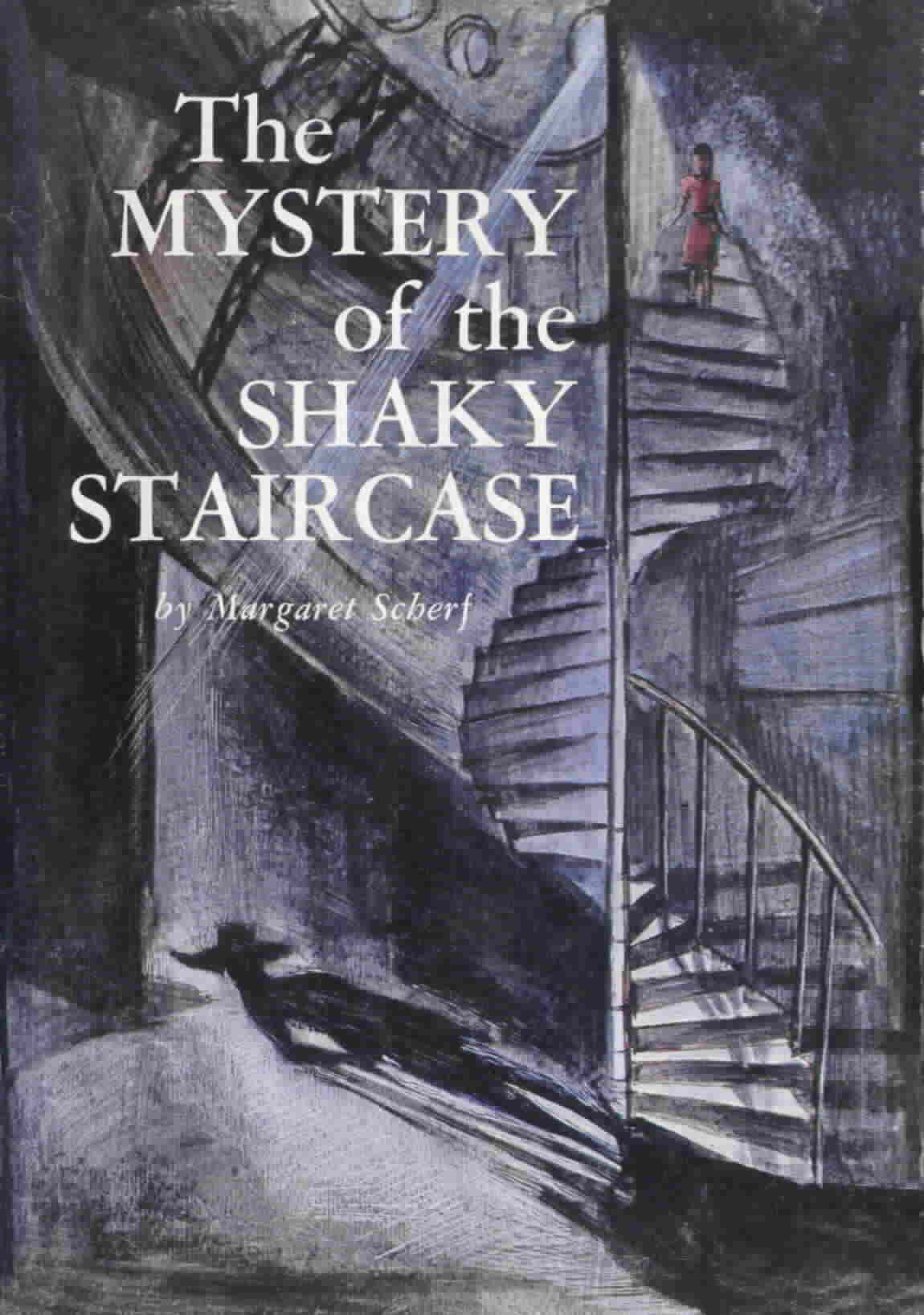 |
|
| In time, the clues begin to add up, and the girls find the answers they need at an old house in the country. An unscrupulous group of people create fake Russell paintings and secrete them in various locations to be found and sold. The truth comes at a price—the girls face grave danger and must use all their wits to help bring the gang to justice. | ||
|
|
||
| The Mystery of the Empty Trunk 1966 | ||
Mrs. Wilson has to leave due to a family crisis, and soon after she leaves, Mr. McGovern discovers that a valuable coin is missing! Suspicion naturally falls upon Mrs. Wilson, and the neighborhood busybody, Edna Partridge, insists that Mrs. Wilson is nothing more than a thief. |
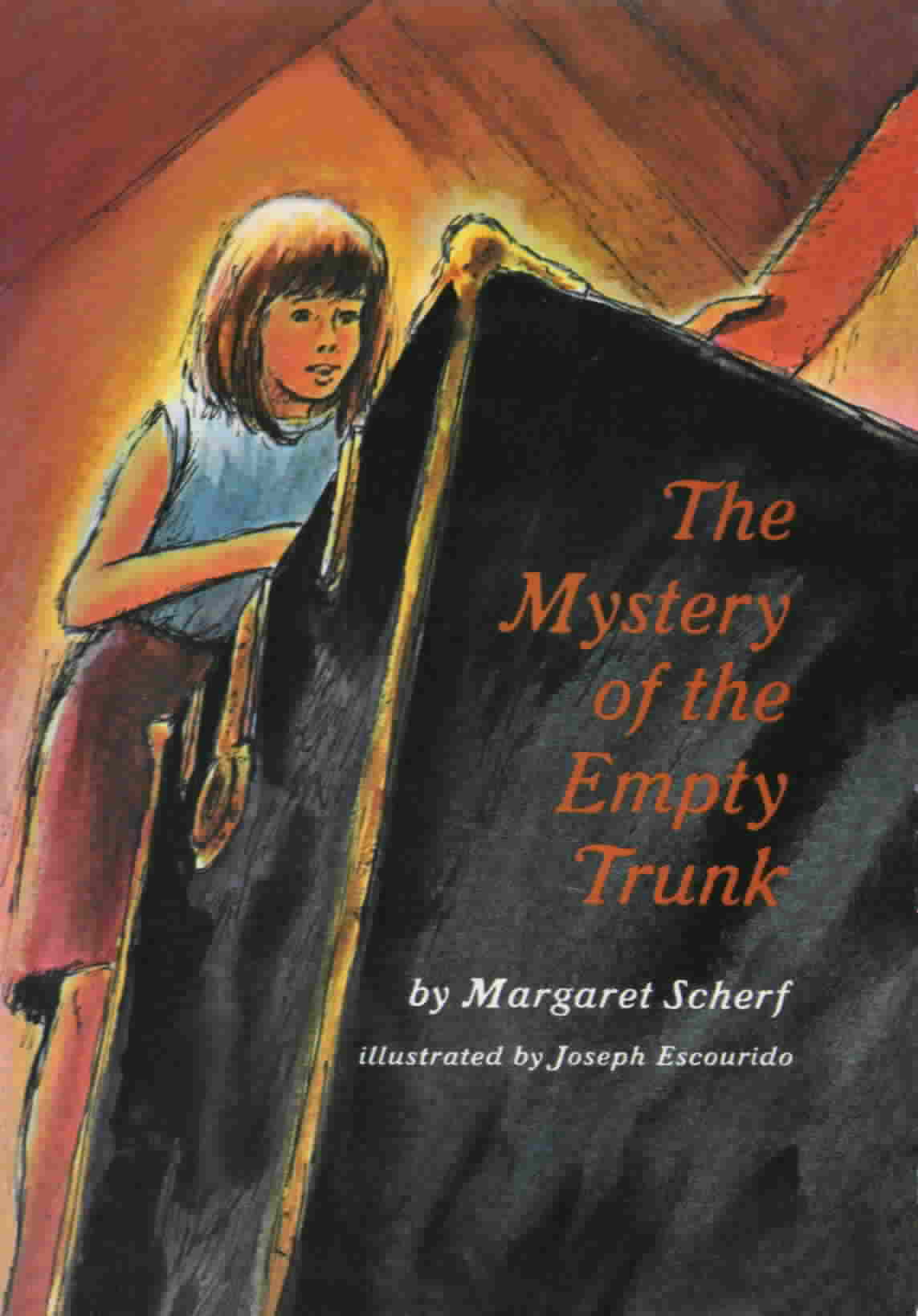 |
|
| Jane later discovers that the stolen coin has special significance and that valuable coins are at the center of a group of swindlers. Jane steadfastly follows the clues, clears Mrs. Wilson's name, and helps bring the swindlers to justice. | ||
|
|
||
|
Margaret Scherf's Published Writings All of Scherf's novels are adult murder mysteries except for those otherwise indicated.
|
||
|
|
||
| Back to Main Page | ||